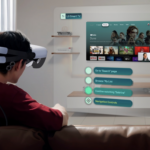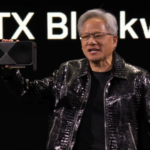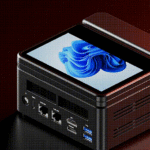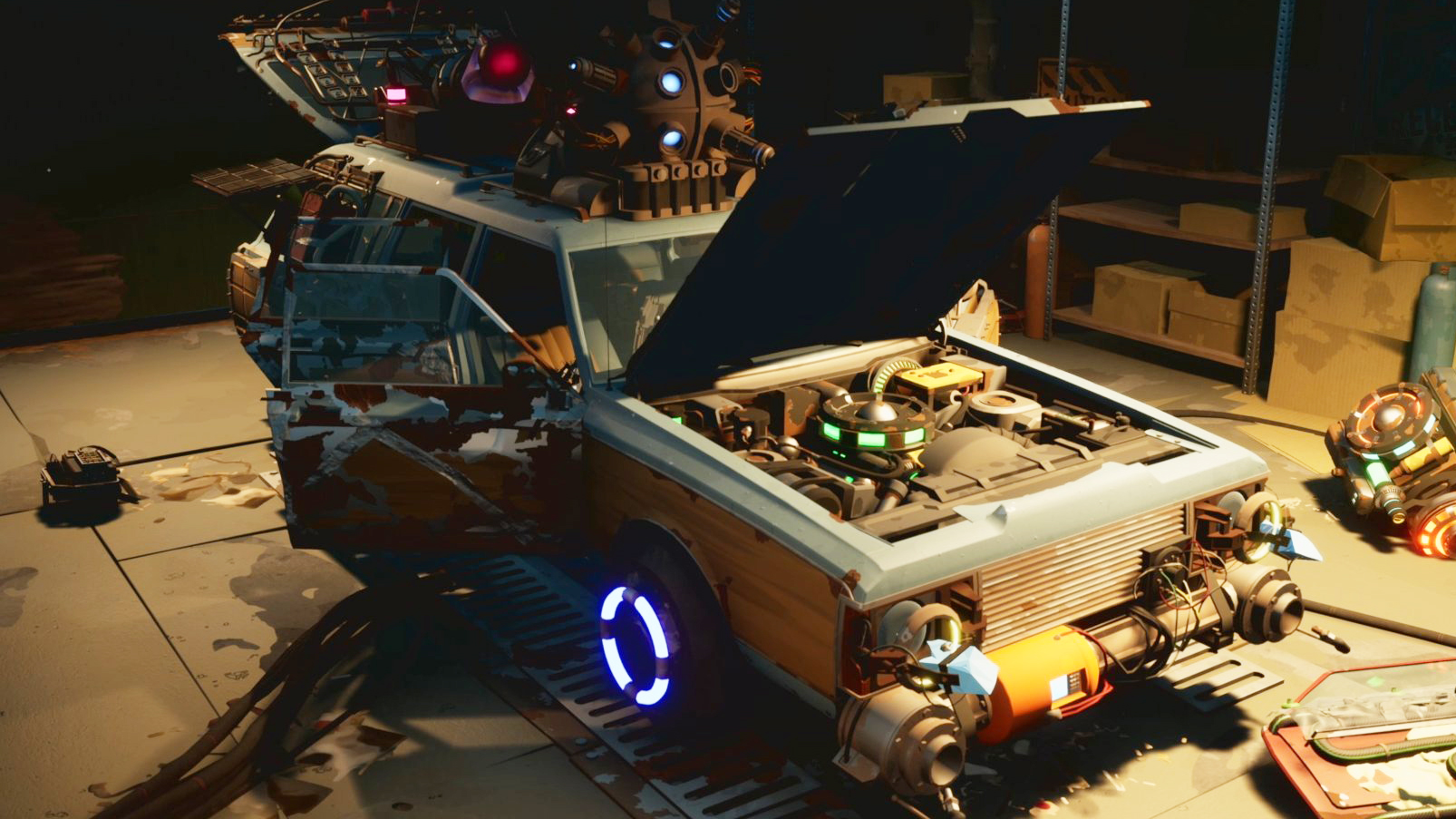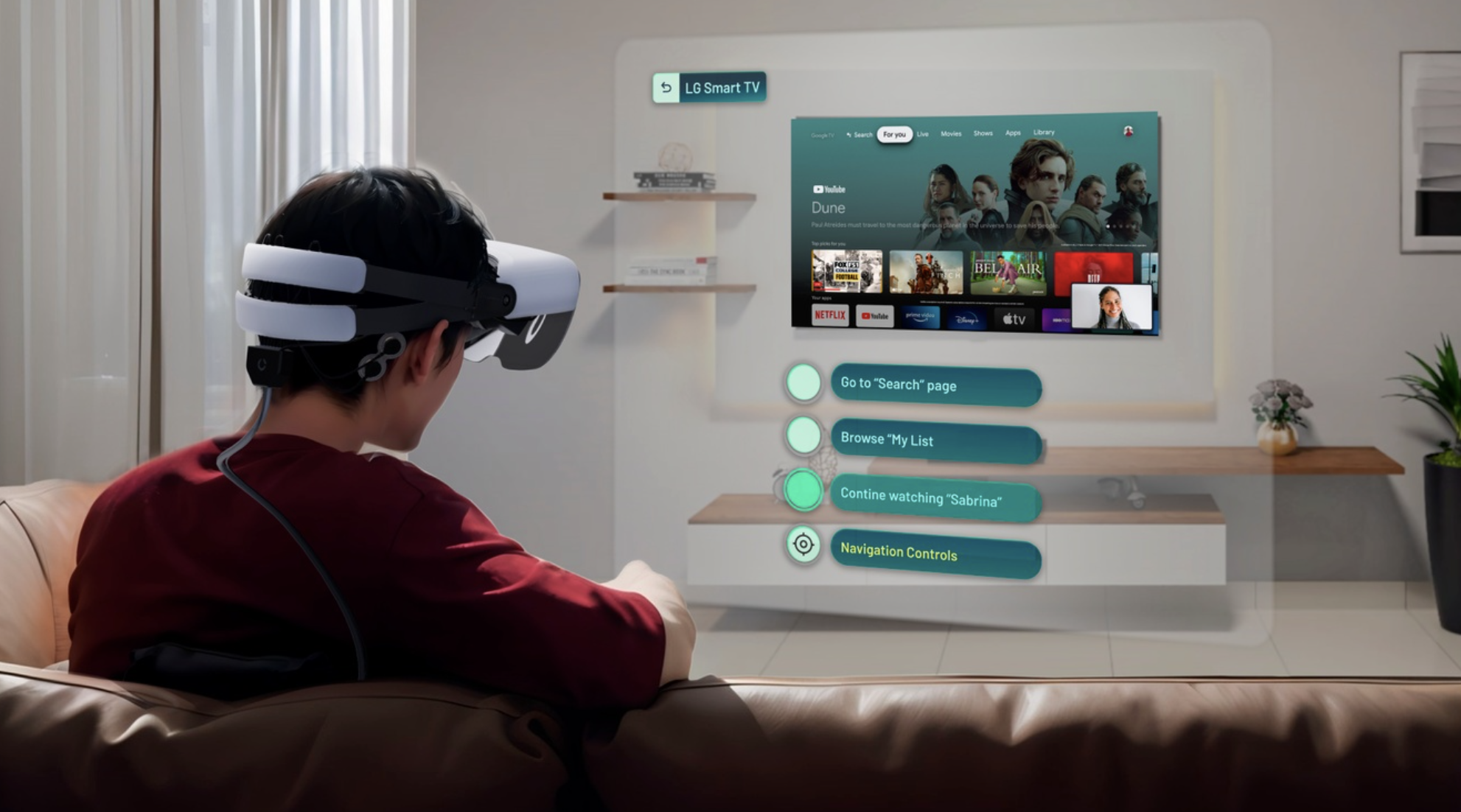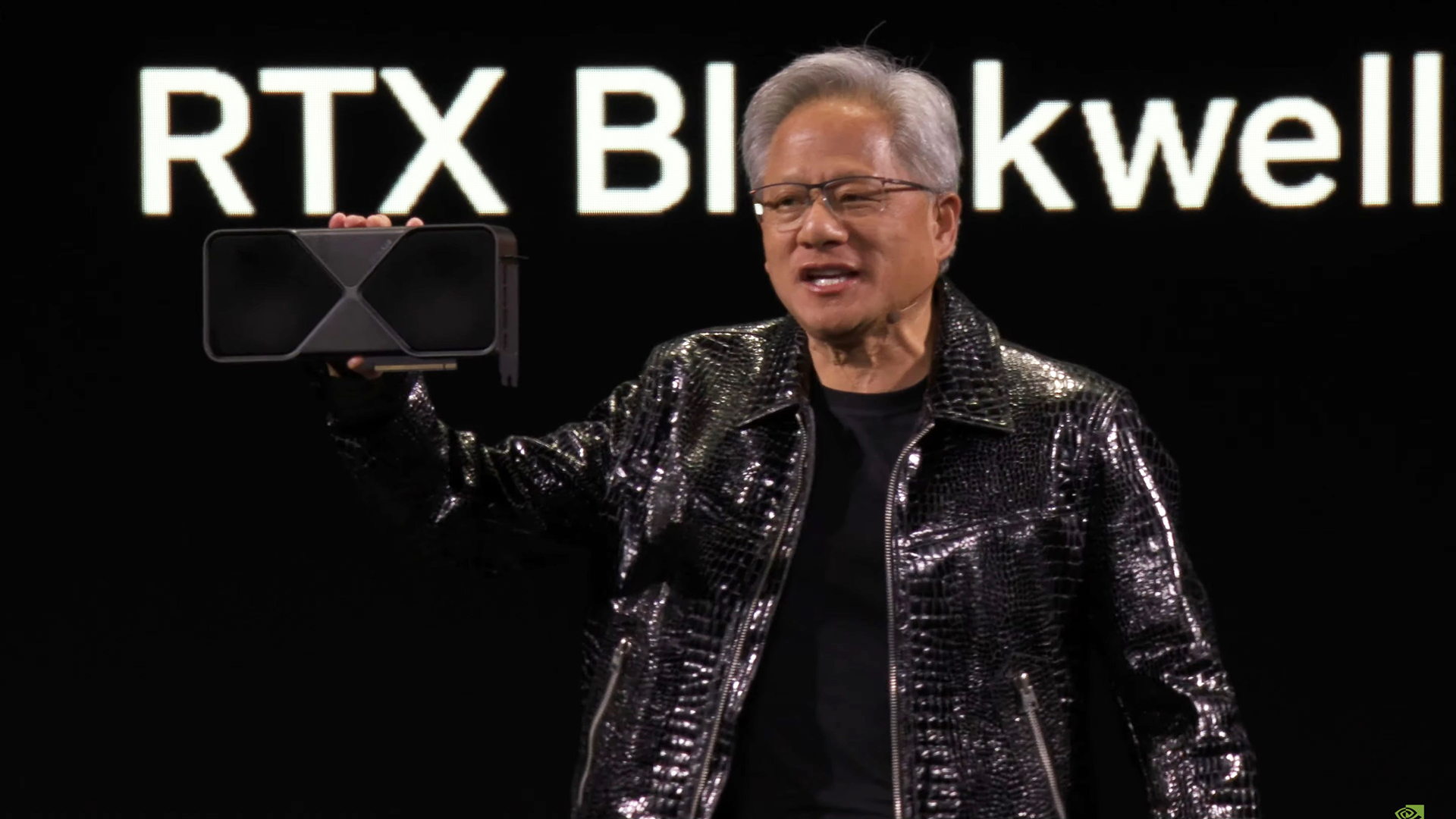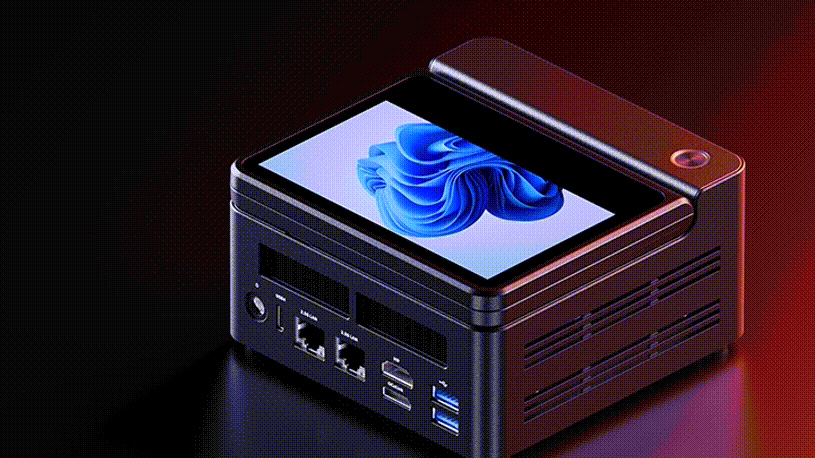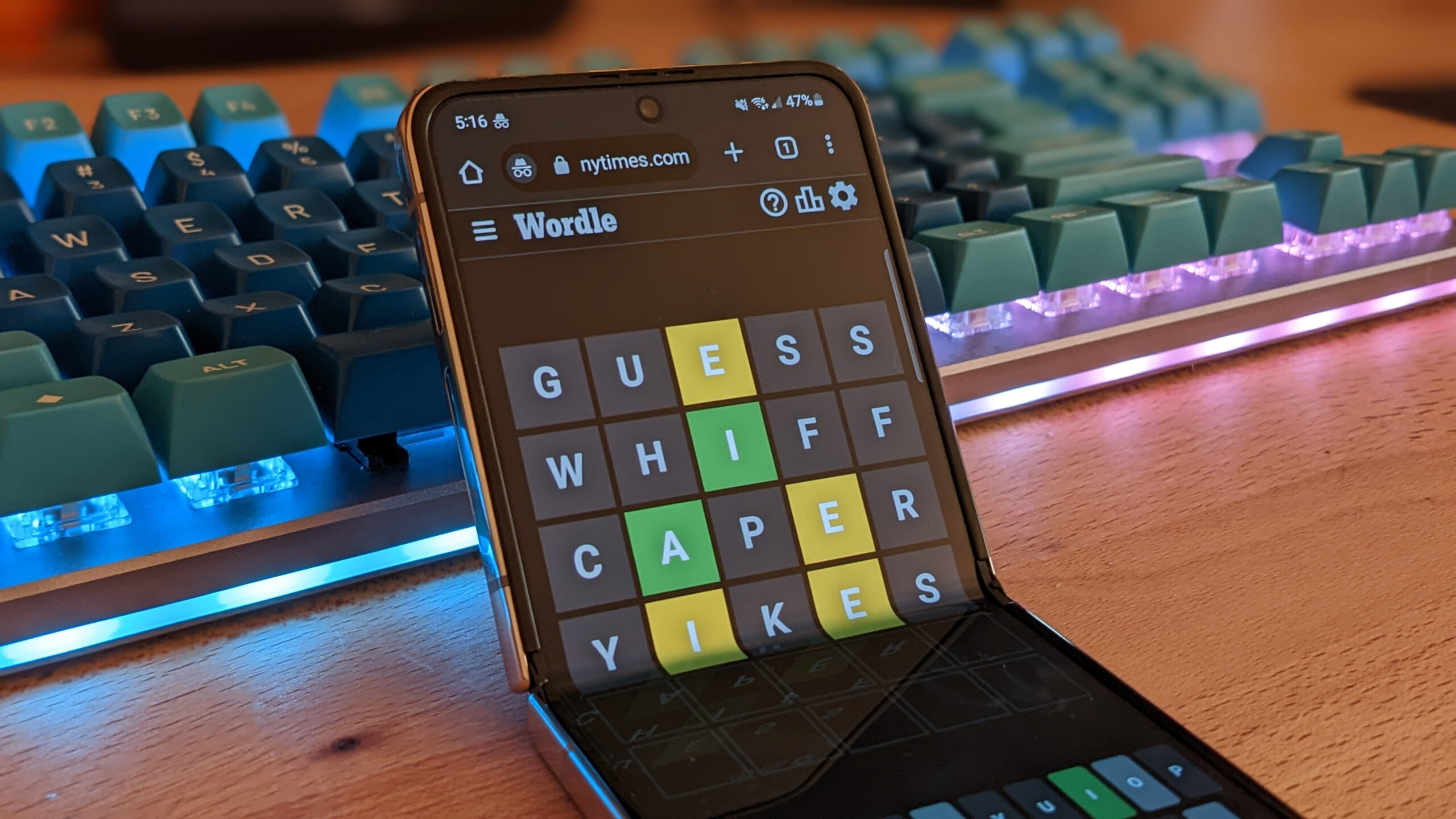It’s bad news when the US government takes over a huge parcel of land and uses it to run secret experiments. It’s worse when the government seals off that land with towering concrete walls and entirely dips.
And, wow, whatever the government was doing in driving survival game Pacific Drive, they sure mucked things up. There are so many anomalies it makes Stalker’s exclusion zone look like Stardew Valley.
In Pacific Drive you’re a courier who has unfortunately stumbled inside that cursed zone—formerly the Olympic Peninsula in Washington state—and the only way out is to go deeper in. Thankfully, you’ve got the best companion a survival game has offered since Sons of the Forest introduced us to Kelvin: a rusty, junky old station wagon that instantly becomes your best friend and mobile base.
Starting at the safe zone of a small, dingy garage at the side of the road (and guided at times by some cryptic voices over the radio) you begin making excursions into the exclusion zone to collect resources and unravel the mystery of what actually happened there. Using tools like a crowbar and a scrapper (it’s like a handheld buzzsaw) you cannibalize the rusted remains of cars and trucks and snoop through long-abandoned cabins and government trailers to gather crafting materials.
There’s a real beauty to the woods of the Pacific Northwest, but so much horror as well. There are unsettling noises from deep in the trees, strange glowing lights bobbing in the distance, and troubling, crunching sounds in the earth and woods that had me whirling around every few seconds while I collected scrap metal and pieces of plastic. Soon enough those noises gave way to true horrors: hovering mechanical terrors that sunk anchors into my car and dragged it off the road, cracking bursts of blue electricity that fried me and my clunky station wagon, bouncing metallic orbs that latched onto my car’s frame and played havoc with the electrical system until I used my scrapper to cut them off.
(Image credit: Ironwood Studios)
There are also sometimes weird, motionless mannequins in the road and woods. Sometimes there’s… quite a lot of them. Some of them posed like they’re waving. Inviting you over. Brrr.
And that’s not even getting into hazards like pockets of radiation, powerful thunderstorms, and obstacles that make you swerve off the road and into ditches or murky swamps. Any and all of this can happen at once, and rarely are you contesting with just a single hazard at a time. As a human I only need to worry about my health, but my car has more than a dozen different parts that can be damaged, so I’m often screeching to a halt, jumping out and making a quick fix, then jumping back in and speeding away again.
I also need to keep enough fuel in the tank, the battery charged, and the headlights working. On plenty of excursions I made it back with doors and bumpers busted or completely missing, no lights, and four tires that could barely hold air.
(Image credit: Ironwood Studios)
Once you’ve collected as much scrap materials as you can (or when you’ve simply taken so much damage you need to get back to the garage ASAP) you’ll need to escape by finding an anchor (a glowing sci-fi orb) and using it to activate a portal back home. That portal, marked by a towering skybeam, is always some distance away from where you activate it, so you need to drive across the map to reach it—and boy, the zone doesn’t like that at all. A mega storm kicks up and zeroes in on your car like it’s the closing circle of a battle royale, and even if your wagon is still in top-top shape at that point, that drive to that portal is always hectic as hell, and exhilarating when you finally make it.
There’s a real joy in fixing the wagon up after a long and punishing mission. Resealing or replacing the tires. Patching the panels or putting on new ones. Trying out new decals on the body, improving the doors and bumpers, even the simple task of refilling the tank with fuel, charging the battery, and unloading the trunk is pleasurable busywork, especially since after the hazards of the zone it can be done leisurely in complete safety. There’s even a way for the car to show its gratitude that I’ll leave you to discover yourself. I’ll just say, it’s one utterly charming automobile.
(Image credit: Ironwood Studios)
Anyone who’s owned a car for years, especially an older model, will no doubt think fondly of that car’s quirks. The 1981 Plymouth Horizon I had as a teenager had a few oddities: at some point during a drive the glove compartment would invariably spring open with a loud crash, scaring the utter hell out of me and my passenger. Over time three of the four outer door handles broke, too, meaning when I went to pick up a date we’d have to climb in through the rear passenger-side door. What a sexy night, huh? An awkward crawl over the seats followed by a jumpscare during the drive.
The car in Pacific Drive collects quirks, too, as a side-effect of traveling through anomalies in the zone. At one point the horn honked every time I opened the tailgate, which startled me no matter how hard I tried to remember it was coming. Another quirk surfaced later: when I’d put the shifter into park, the driver’s side door would pop open, which isn’t the best thing when the doors are my only protection from deadly radiation.
Luckily the garage is stocked with a diagnosis tool to identify and purge the car of its insidious quirks. Using four different columns, you select conditional term and statements that fit the quirk you’re trying to describe, like: Shifter -> Shifts to park -> Front right door -> Opens
(Image credit: Ironwood Studios)
It’s a great little detective game, and if you successfully diagnose the quirk you’re told what the cure is, typically a mechanical first-aid kit you can then craft and use.
(Keep in mind not everything is a quirk. While leaving the garage one day I noticed my car kept pulling to the left, and after a lengthy diagnosis I finally determined that both tires on the left side of the car were flat. Nothing supernatural about that.)
Exploring deeper into the zone yields new discoveries and danger but also more resources, and as you fill your trunk with scrap and plastic and wire and chemicals, you can start upgrading your car and garage. It wasn’t long before my station wagon had sturdy steel doors, more durable bumpers and paneling, and chunky offroad tires so I could leave the pavement and go crunching through the woods. I researched, crafted, and installed storage slots on both sides of the car and the roof, and soon after started attaching sci-fi gizmos to them, like a radar for pinpointing resources in the zone—though using it drains the battery pretty heavily.
The best of these gizmos are the ones that turn the zone’s hostilities into a benefit: I’ve now got a wind turbine and lightning rod attached to my car, meaning high winds and lightning, while still scary as hell, will recharge my battery. I actually drive into storms now instead of automatically fleeing from them.
My workshop is filling with new gadgets, like a recycler that can turn items into base resources, a machine that can heal a broken car part over time, and a fax machine that can receive mysterious missives from elsewhere in the zone. My excursions are now filled with purpose as I hunt for specific resources I can use to craft new gear and upgrades to make my beloved, quirky car more durable.
Pacific Drive, from Ironwood Studios, releases on February 22. The build I’ve been playing only covers the first couple story missions, but even after completing them within the first few hours I’ve played eight more hours just to run missions in the zone, research new tech, and craft new items to upgrade my car and garage. My new project is a device that will turn rainwater into more battery power. Hey, it’s the Pacific Northwest. If it’s gonna rain all the time, I might as well benefit from it.



